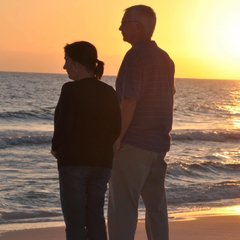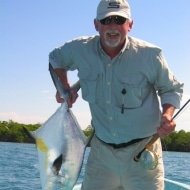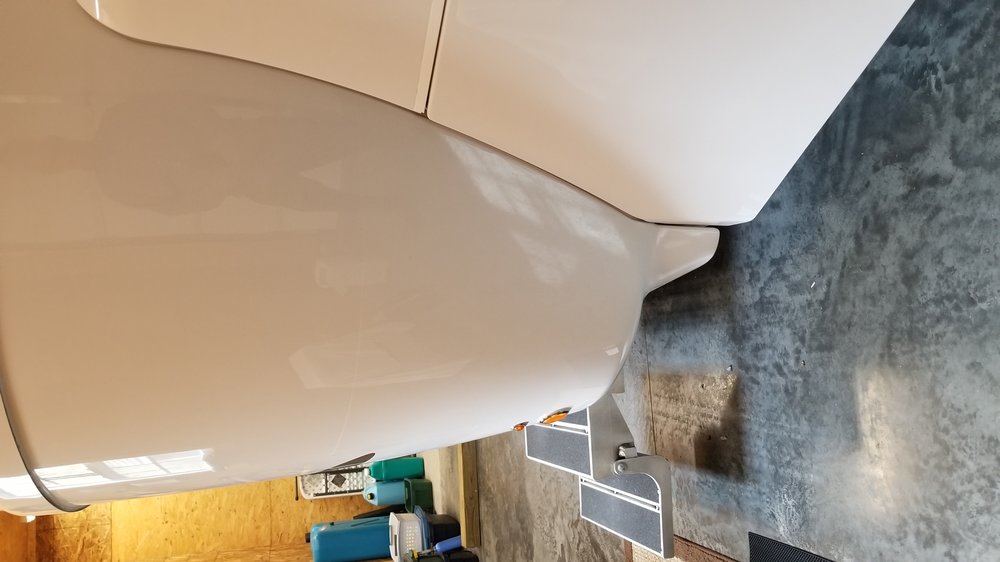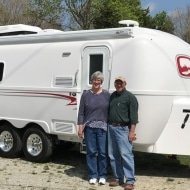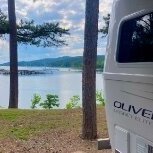Leaderboard
Popular Content
Showing content with the highest reputation on 01/29/2019 in all areas
-
Like a lot of people a year or so into ownership, I've been working lately on reducing the amount of stuff I carry - getting rid of things we never use and also finding strategies of making what we do carry lighter and more compact. I've also been working on a dedicated toolkit that would just stay in the truck permanently, so I don't have to worry about packing tools up and inevitably forgetting the one tool I need that trip. So what I've been after is, 1) a complete toolkit that has everything I might reasonably need for roadside or campsite repairs; 2) compact enough that it can be stored in the cab of the truck permanently, without being in the way; 3) can be stored in a way that still gives easy access when traveling; i.e., I don't have to completely unpack the truck to get to them; and 4) contains quality tools that can be relied upon. Certainly the easier solution is to ignore requirement #2 and just put a toolbox of some sort in the bed of the truck. I think that's perfectly fine; but personally, I'd rather keep them in the cab to protect them from moisture, trail dust, theft, and getting all scuffed up from being jostled around. Plus by keeping everything compact, I'm also forcing myself to keep the weight down. So in the following posts, I'm going to try to list all the tools I've placed in my kit, the reasons for choosing what I did, and then some ideas on how to best store them in your vehicle. The tools I've included are, as I said, what I think constitute a "reasonable" tool kit for repairs while traveling. "Reasonable", of course, is subjective. If you're the type who is likely to call Good Sam to change a flat tire (nothing wrong with that), then your "reasonable" might be limited to a few screwdrivers and a pair of pliers. On the other end of the spectrum, there are guys over on Expedition Portal who wouldn't go to the grocery store without a welder in their Jeep. And nothing wrong with that, either - to each his own. With that in mind, I'd like to think that my following posts are just a starting point for conversation. I'd love to know what others think about these choices - surely I've forgotten something, or one of you knows some better options or alternatives. With some additional voices, hopefully this thread can provide some guidance for new owners or others like me who are looking to pare down what they've been carrying. Fair warning, I do like nice tools, and have a thing for German tools in particular, so some of the stuff listed below is pricey. But I don't think that there's anything here for which you couldn't find a decently priced alternative, and arguably a better value. Or, you might be the guy who doesn't accept anything shy of Snap-On. Either way, buying all of these at once will put a good dent in your checkbook, even if you're shopping at Harbor Freight. So keep in mind that this isn't intended to be a "must have" list. Like I said, you probably don't "need" any of this. All you really need, in most situations, is a cell phone. But if you do decide to put together a toolkit of any size from scratch, I suggest you make an Amazon list and then set price alerts for each tool using 3 Camels (www.camelcamelcamel.com). That way you can buy at the lowest price and spread your purchases out over several months to make the cost seem more palatable. (I've also found after explaining that strategy to my wife, that when the packages arrive, she asks how much we saved vs complaining that I've bought yet another tool.). Actually, she does both, but I think there's less complaining than before.2 points
-
Yes, is very remove easy to remove using a hair drier or a heat gun. Contrary to what John says it is also easy to install and goes around bends very easy. It's made to apply around bumpers and mirrors on cars and you can pull it around almost any curve. The curves on the Oliver are easy to go around. It applies like window tint. I had never installed it before so bought a little extra to experiment with. I made a pattern out of paper for my templates. If you follow the instructions and use the proper soap mixture it just slides around until you squeegee it down. If you look close at the picture I posted above you can see the line in the middle. I used 18" bulk material so it is 18" up from the bottom. I also installed it along the bottom behind the tires. The bulk material can be bought in many widths. Like I said it has been on for a year and still looks great and no road chips. I have no need for something as complicated as John installed as we don't travel the kind of roads he does. https://www.invisiblemask.com/imask/index.php?route=common/home&gclid=Cj0KCQiAkMDiBRDNARIsACKP1FFhTmefn6lgAAQUFvkL9MiMMxnIsPNCYmWZvvCjFPDOxWUlasd9F04aAgVnEALw_wcB2 points
-
This seems to be a fairly new to the USA composting(?) toilet but common to Europe. Looks like it was released in the USA fall 2018. I'm hesitant to say it's composting since all it does is dry out the solids but are RV composting toilets truly composting or just hiding the smell. There's no composting material, no stirring mechanism. But it looks easy to clean and it looks like it would be easy to plumb into the black tank. The few reviews that I've seen are favorable. I'm still researching options for a new trailer. https://separett-usa.myshopify.com/products/villa-9210-dc1 point
-
1 point
-
MODERATOR: Please feel free to move this side topic to another area of the forum if appropriate. The topic of Ollie's jacks or "On-Board Leveling Devices" (OBLD's) that are used to level our Ollie's" is discussed elsewhere on our forum. For legal reasons they are no longer referred to as "jacks" so as not to be confused with real jacks as suggested above by Permit Bob. Personally, I call a John a John and a Jack a Jack. Ollie's "Jacks" (OMG, did I use that word?) err..... "On Board Leveling Devices" (OBLD's) are the same ones that OTT Owners have used for years to level Ollie, fix flats and rotate tires. Nowhere on our Forum, or for that matter anywhere else have I seen or heard of any information about Ollie's OBLD's failing when properly used. Nor have I any indication that the Ollie's OBLD's capacity have had their design compromised over the years. It does appear that due to Supplier liability concerns, their documentation was changed to discourage such uses, and as a result, OTT documentation had to be changed as well. I can understand the legalities. That said, our Oliver OBLD's appear to have far more capacity than that needed to raise up a side of our trailers when properly used. I suspect that many Olive owners continue to use their OBLD's as Jacks. I would wager that this renegade group of Owners also tears off their mattress tags even though the lawyers tell us not to do so! I would submit that the majority of this group does not carry an extra jack for this purpose. I suspect that if forced to, as a last resort, we would get creative with the one in our TV. Should you chose to use your Oliver OBLD, there are some safety thoughts that I believe prudent when changing tires. Some are: Pick an area that is "Side to Side" as level as possible with firm ground/pavement to change your tires. Doing so helps prevent "Side Loads" on the Oliver Jacks. Side loads can compromise most jacks including Ollie's! Keep Ollie fully hitched to your TV when changing tires. Put the transmission in park and FIRMLY set the parking brake of the TV. Chock the opposite trailer tires. Lock the trailer entry and instruct travel partners to not enter the trailer or come near the tire change process. I do NOT recommend deploying the front jack when changing Ollie or TV tires while connected to the tow vehicle. Deploying the front Oliver jack would likely apply additional stress to the trailer frame, and add little additional safety to the process. Break and final re-torque lug nuts (A Two Step Process) with tires are on the ground and at least partially loaded. Use dunage under the jack, especially in softer ground surfaces. Finally, keep all parts of your body out of harms way at all times. Whether you use your OBLD, or a bottle jack to change a tire is a decision every owner needs to think about. From a risk management perspective, I put more faith in the OTT OBLD's than I do a bottle jack under a frame or axle. Regardless of which "Jack" you chose to use, the process has hazards that must be managed. Think it through and work smart. Most importantly, if the situation is beyond your experience, play it smart and get help. Geronimo JOHN, not to be confused with an outhouse.1 point
-
We were at Big Bend for Thanksgiving. It was the first time we visited the parks and, for sure!, like no other place we've seen. We stayed at Lajita RV Park and took day trips into both parks from there. Be sure and take a ride out to Santa Eleana Canyon; impressive. The ride through Big Bend Ranch State Park up to Presido, TX on State Road 173 is an eye opener if your not used to this area of the country. Chisco is tight and glad we scouted it out first with just the truck. No need for a weapon. Couldn't ask for nicer folk. Fort Davis, TX and it's observatory is worth a stop. Best, Bob1 point
-
To be precise, all the equipment made by OTT is SAE. They have zero metric. However, the other items made by others may be a mixed bag.1 point
-
Another addition that's handy, and we hope to never need it, is a "short" 2 ton bottle jack that will fit under an axle if you have a flat or a blow out. Most taller jacks won't fit when the tire is flat. I also carry all previously mentioned. Don't forget the screw drivers. Best, Bob1 point
-
I carry both SAE and metric; they come in handy when needed. A multi meter comes in very useful at times and I never travel without it; you should obtain a spare set of fuses.1 point
-
I seriously considered a BigFoot 25 foot trailer but after actually looking at one, although good sized, it is your traditional wood frame, wood this, wood that...ect. trailer. Wood floors with vinyl covering. It's also wide. When I looked at the underside it was a mess. All in all, a heavy duty version of a traditional maintenance plagued trailer. The unit I saw was less than a year old and there was rust and peeling paint on the frame already needing attention. I was leaning heavily toward the BigFoot until I saw an Oliver. Game over. My wife and I both agreed immediately that the Oliver was a much better product. Also, the BigFoots are built in Canada (west coast) so support would be poor for those of us on the east coast. NO CONTEST! Oliver is a much better unit at the start and will be so for many years to come.1 point
-
Sorry, I meant that the disconnect switch is only for the jacks. I just used the term that is used on the packaging for the switch. The manufacturer calls it a master disconnect switch because it is typically used for race cars and boats etc to completely disconnect the batteries from the vehicle. I choose this because they are cheap, can handle high amp loads, readily available, and reliable because their construction is so simple. I may have misunderstood the original question. Also, the amp draw through the switch is only what one jack motor would draw. I only operate one jack at a time. I feel that the 300 amp capacity master switch will more than handle one jack at a time or even all three at once. I also forgot to mention that the red key is removable so unauthorized use is difficult to say the least. I always “disconnect “ the jacks when camping or any time the camper is unattended to prevent the jacks from “accidentally” being moved. Wink1 point
-
If you’re making the trip to Big Bend it’s worth scheduling an evening at McDonald Observatory for a Star Party. If you stay at Davis Mountain State Park it’s a very short drive and then you’re just a couple of hours north of Big Bend. Mike1 point
-
The OTT Sales, Delivery Team and Service staff are all very helpful, and I give them high marks. However, I suspect that most prospective OTT Owners spent far more time here on this Forum getting the info they need and want. I know this to be the case for me last winter and spring. This forum and the "Oliver University" (Located under the Travel Trailers tab), provided answers to my questions that can't possibly be covered in a brochure or sales web site. The OTT forum is graced to have eight designated "Moderators", and several hundred owners that give their time to share experiences and knowledge from an owner's perspective. None of us get paid to do so, it is simply the nature of our owners to willingly want to help out new and future owners. In one respect, I think that the owners take as much pride in our trailers as does the OTT team does in making them. To this owner, one of the aspects of the OTT Forum that is most valuable is the depth of experience that our fellow owners have. We may not all agree on everything, but odds are the person asking the question, and many of us newer owners as well, will get several wise and usable responses to a question. In reality, to just about any question imaginable. I know that this has been my experience and hope that it is yours as well. So, welcome to our forum and ask away. I think you will be amazed!1 point
-
We use the ones that Steve linked to above. They work well and keep everything tight and in place. Mike1 point
-
I agree with everything everyone said about the 3/4 ton diesels. We’ve gone through several different tow vehicles and our Silverado 2500HD outperforms them all. You don’t need the one ton truck. The engine, drivetrain, suspension and frame are exactly alike on both the 3/4 ton and the 1 ton trucks. The only difference is an extra rear floating spring leaf to increase your bed capacity for 5th wheel or gooseneck towing. Otherwise the weight ratings are the same for both trucks until you add the dual rear tires. Diesel fuel costs more than gasoline but we’re somewhat making up for it in increased mileage. Get the 3/4 ton diesel and fergetaboutit.1 point
-
These will work much better because the sheets are really only too wide and these will pull it taut. We’ve use them quite nicely for years without resorting to expensive custom made sheets.1 point
-
Recent Achievements


